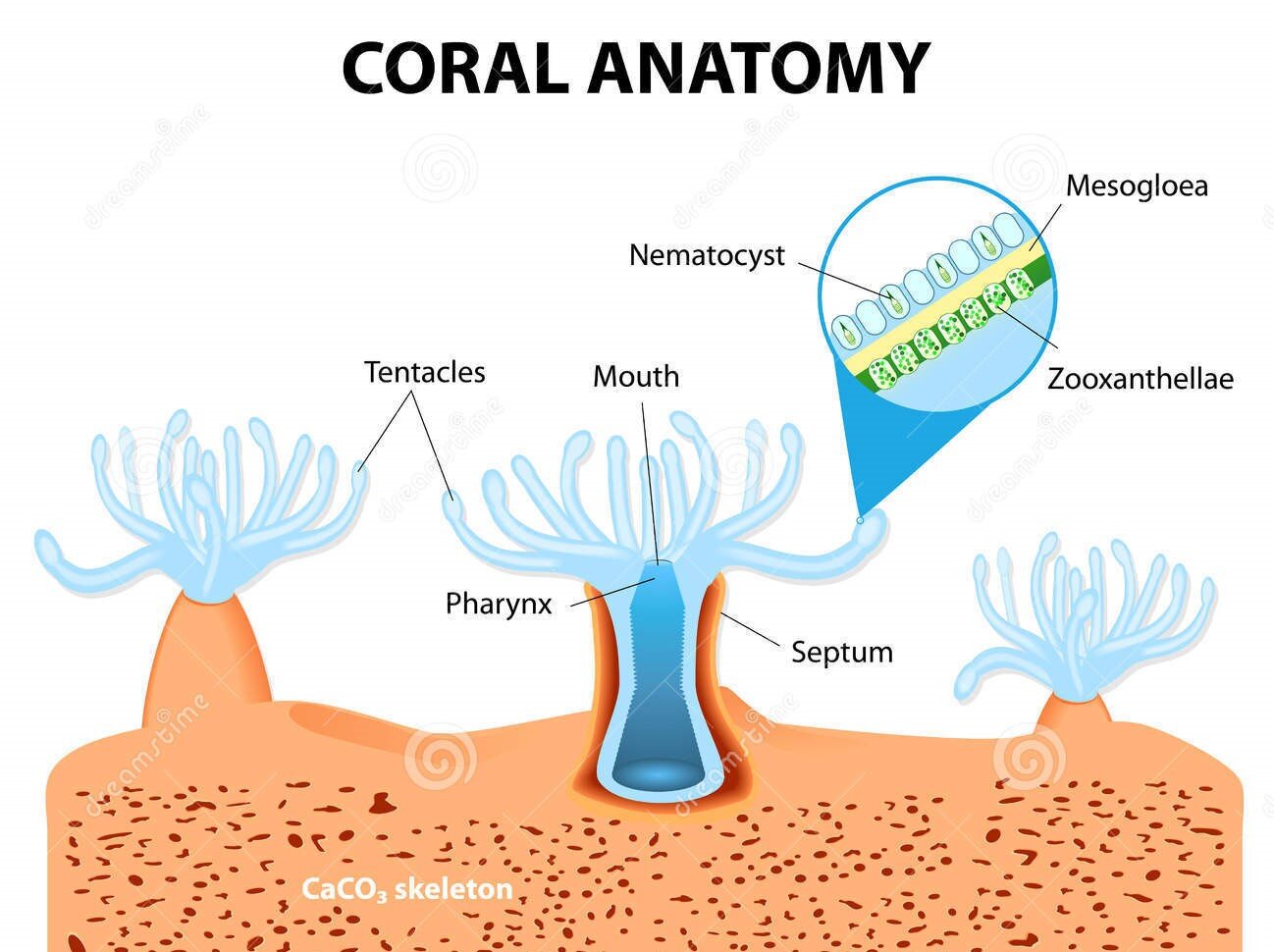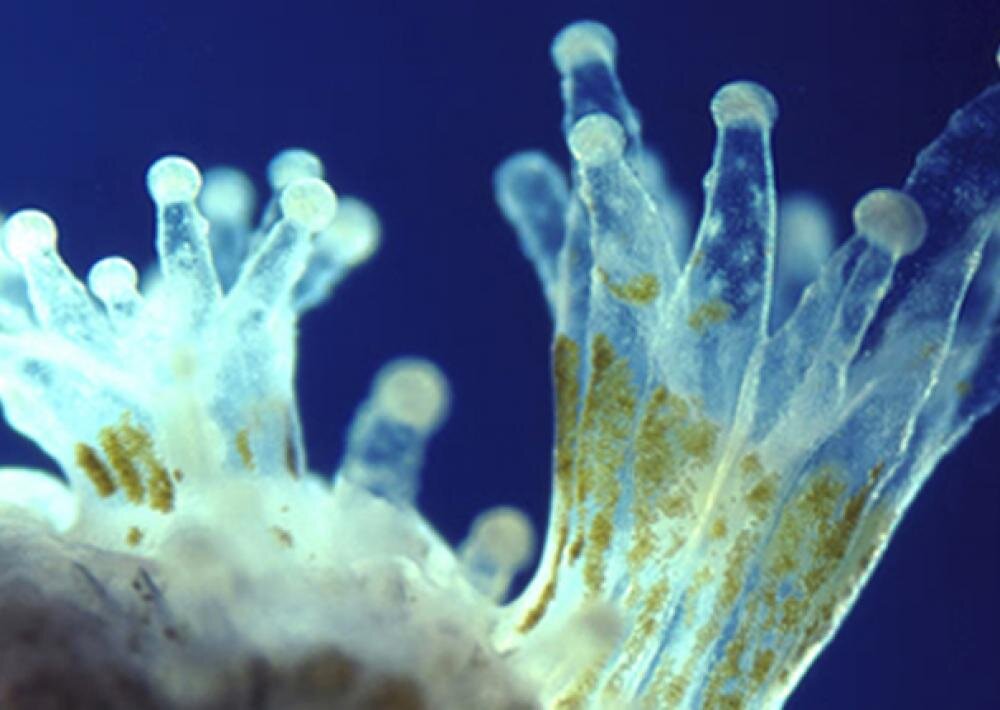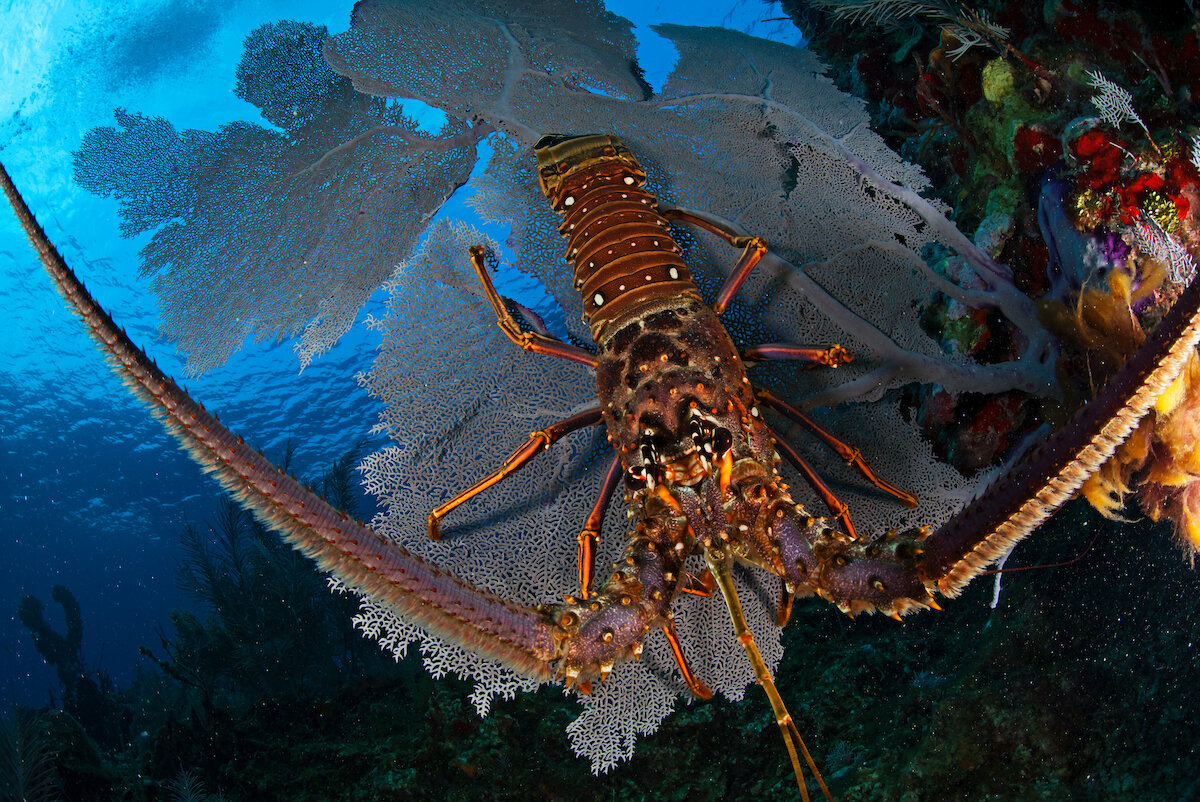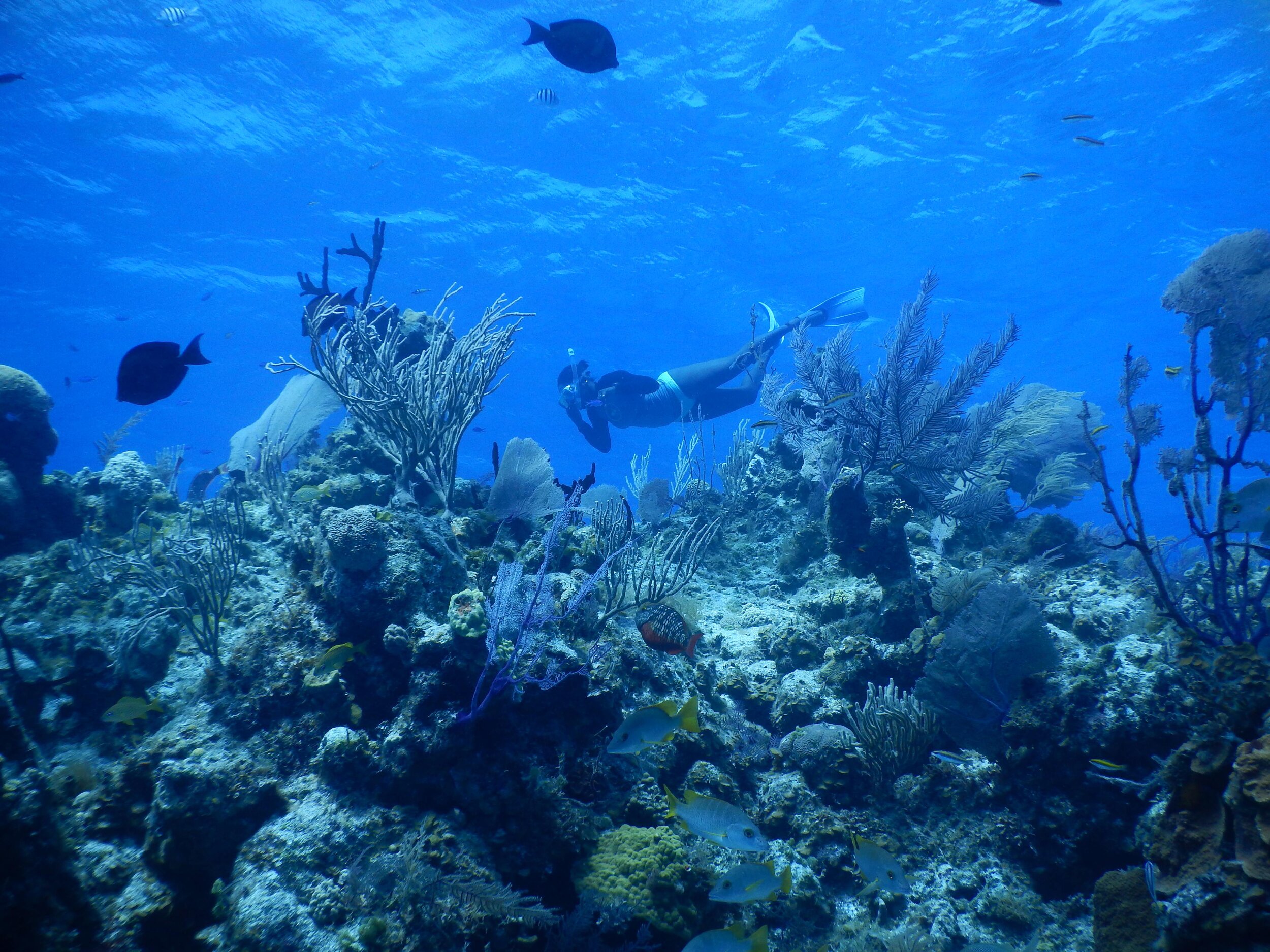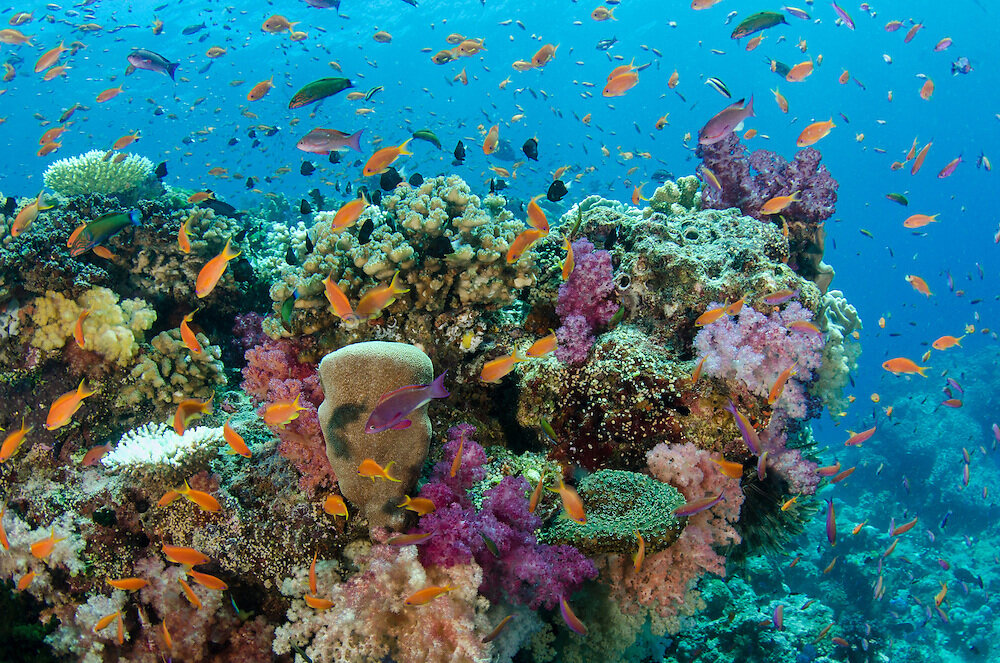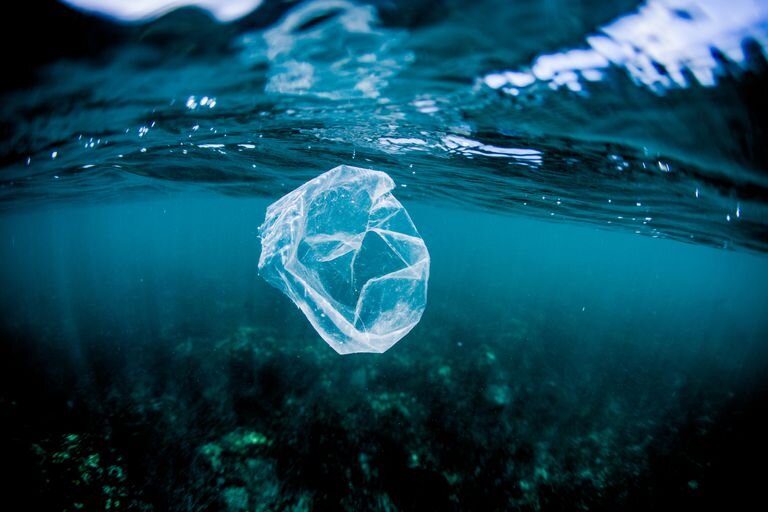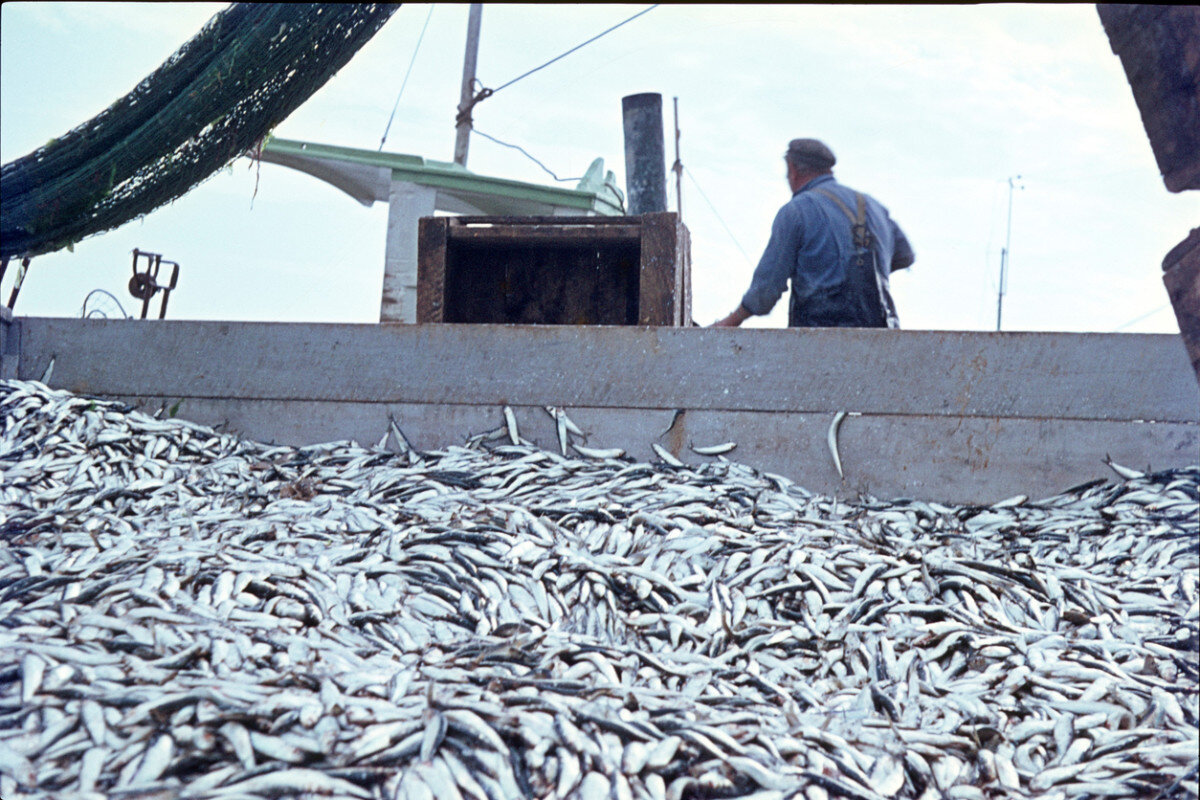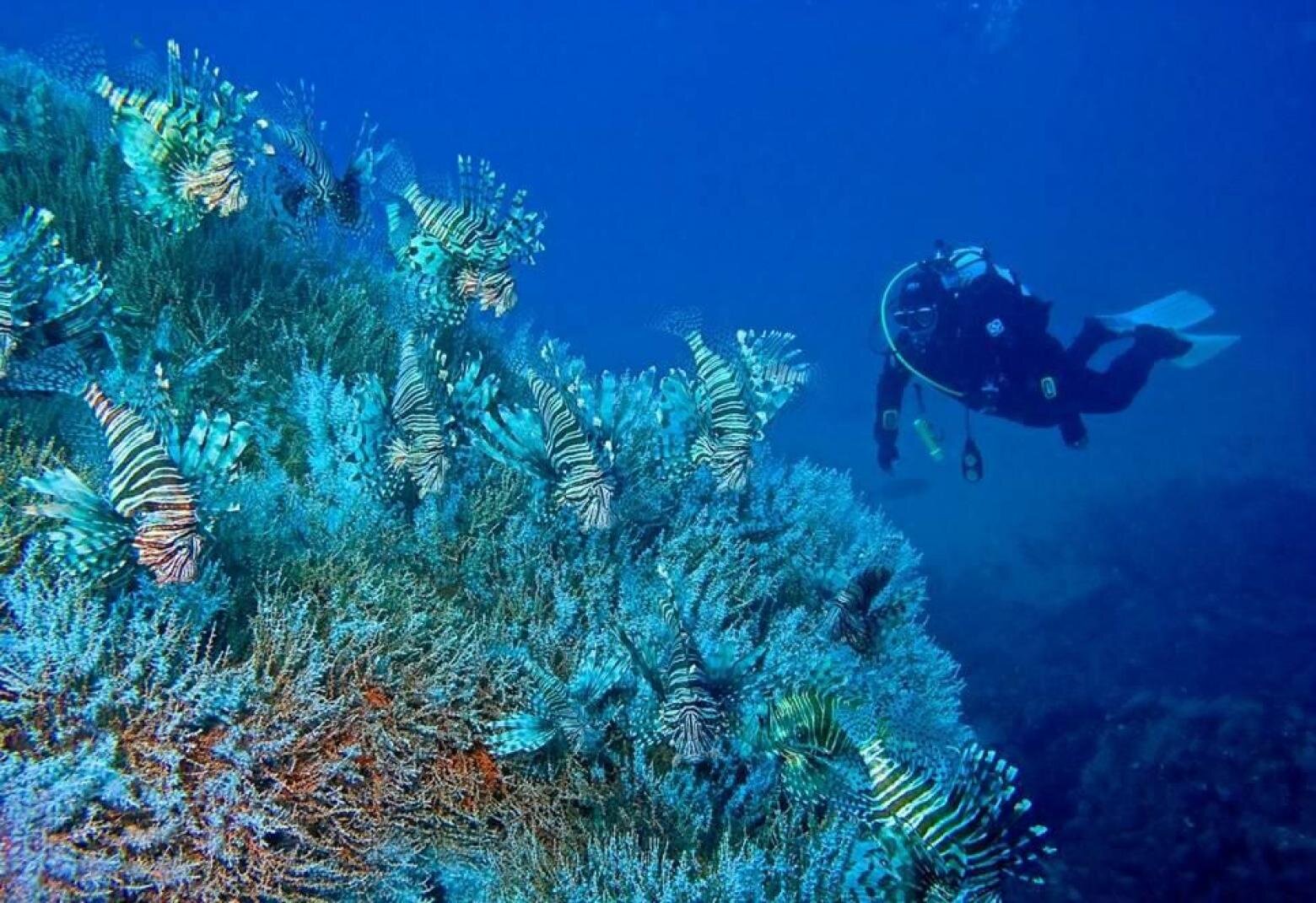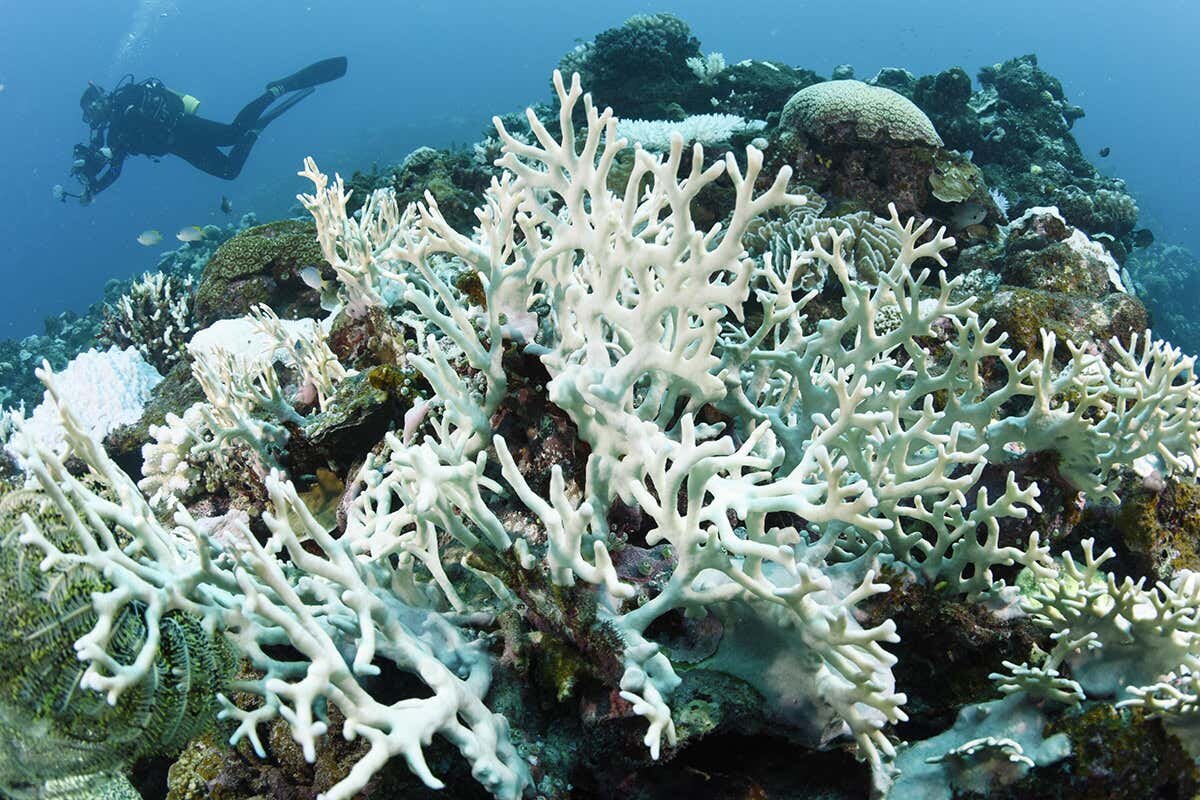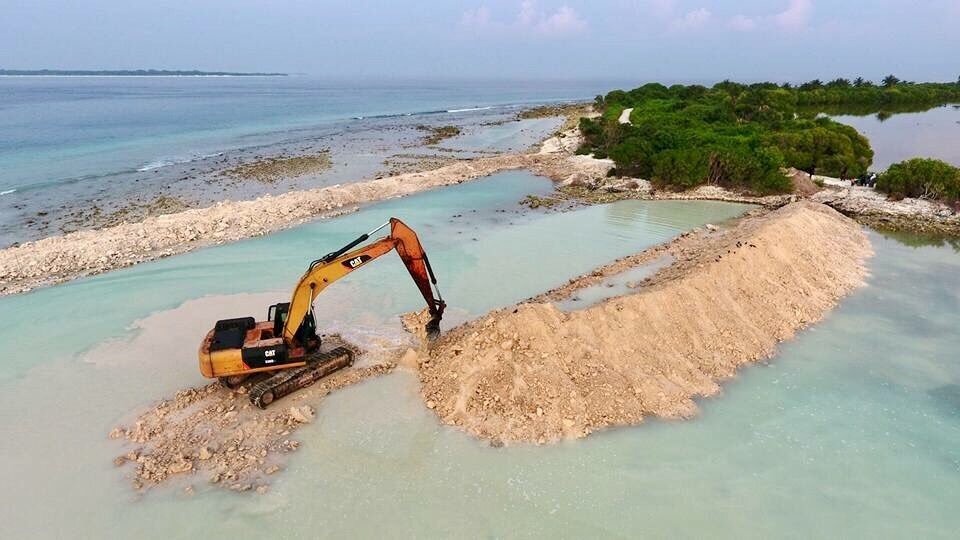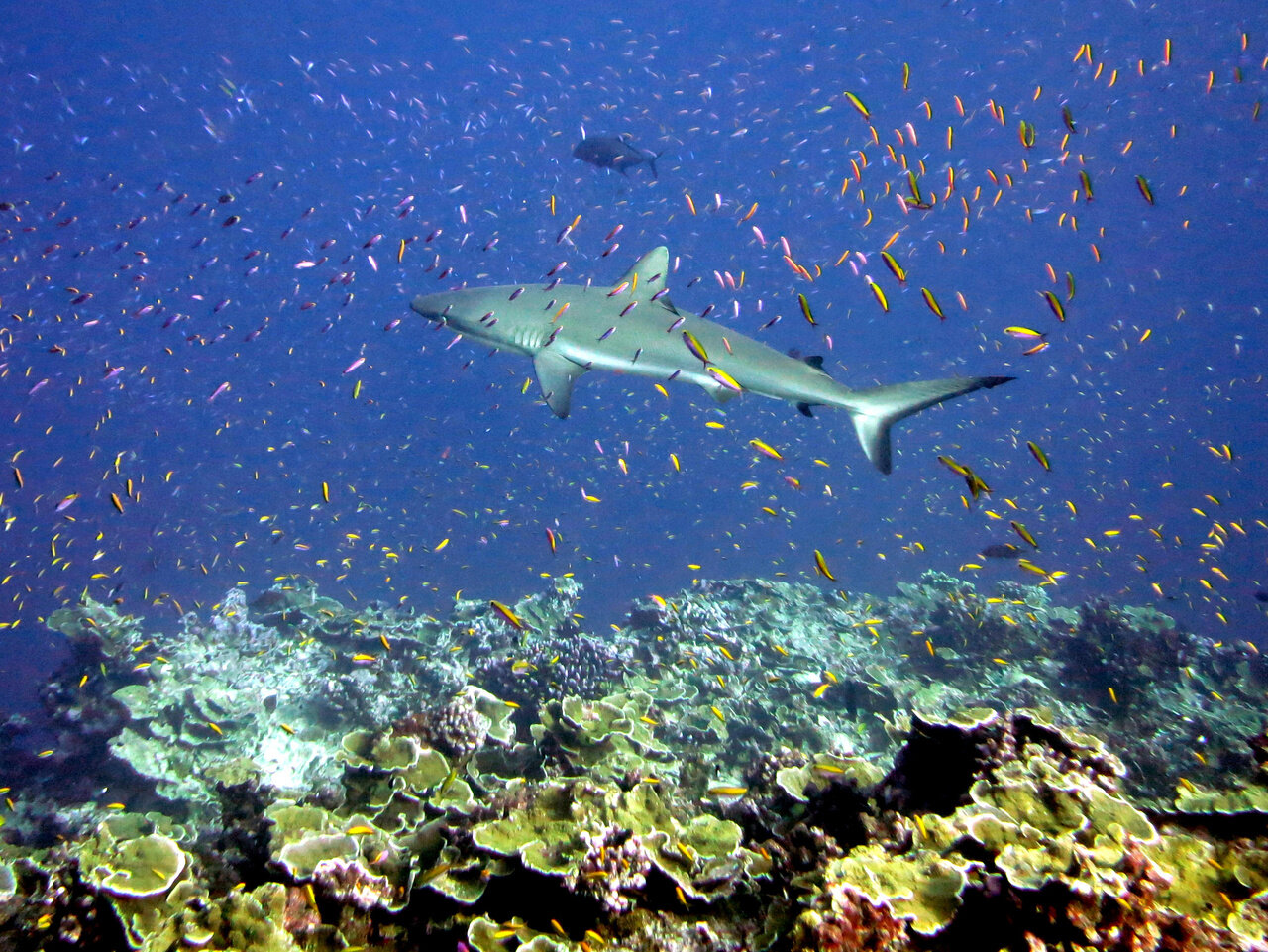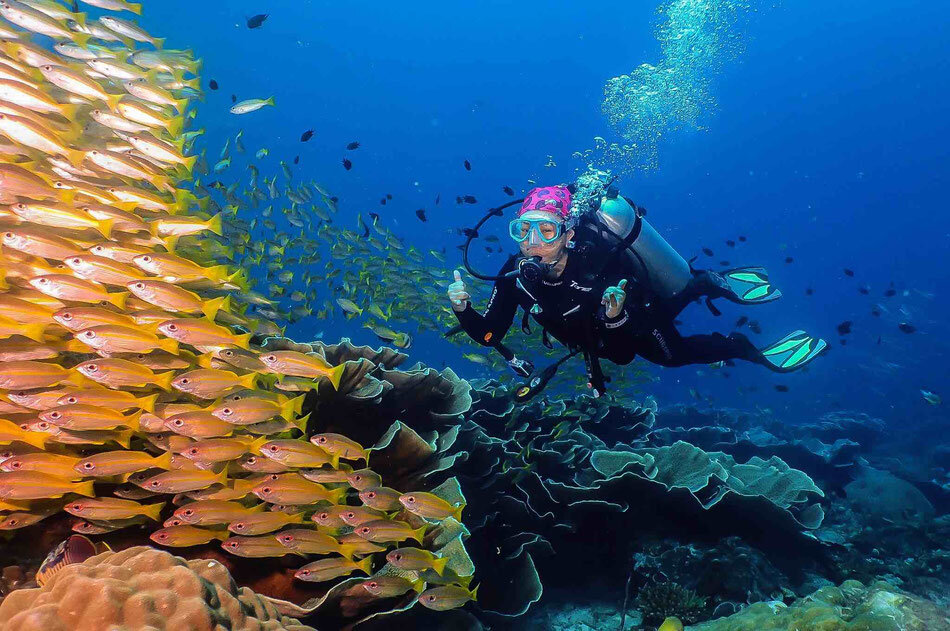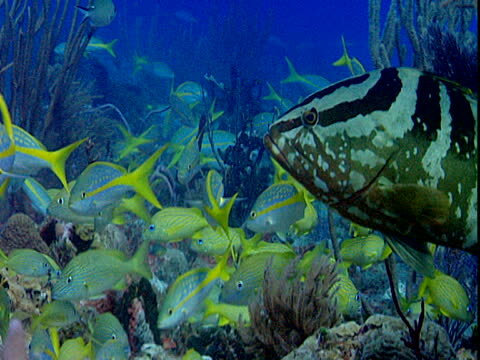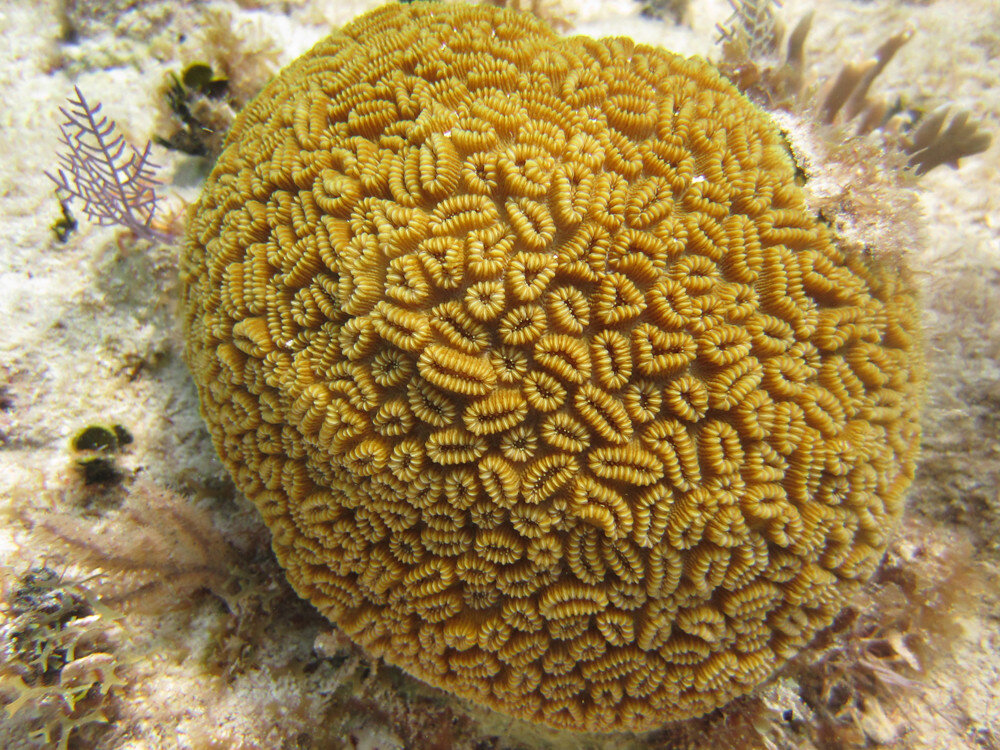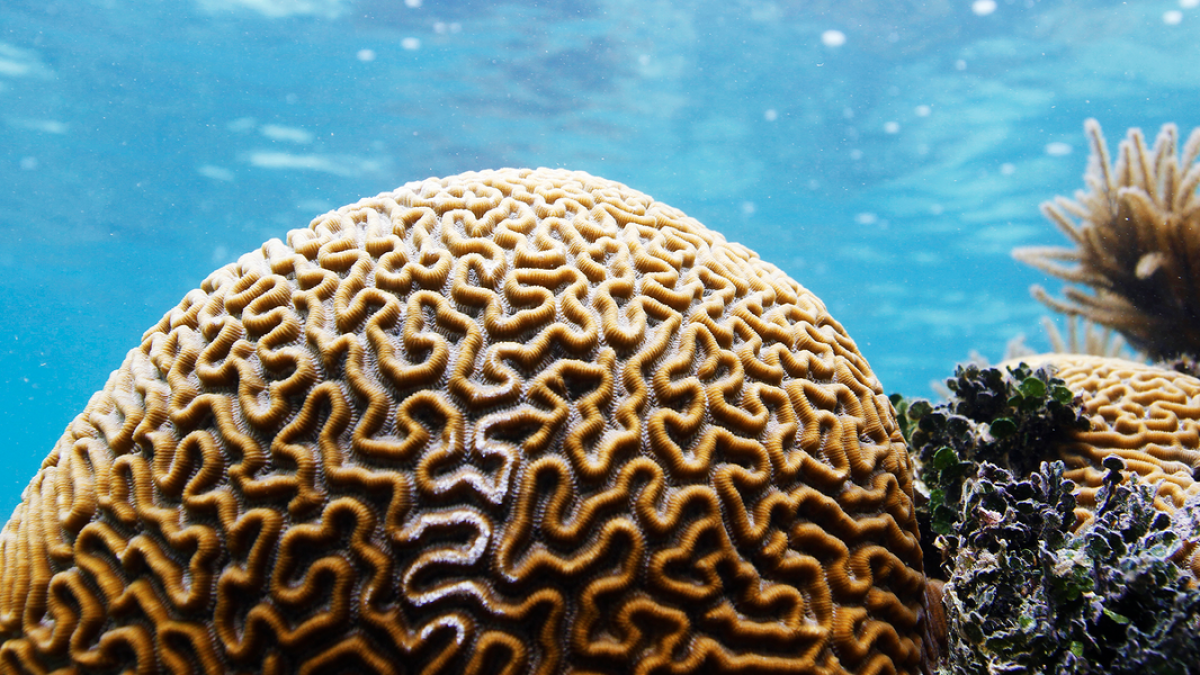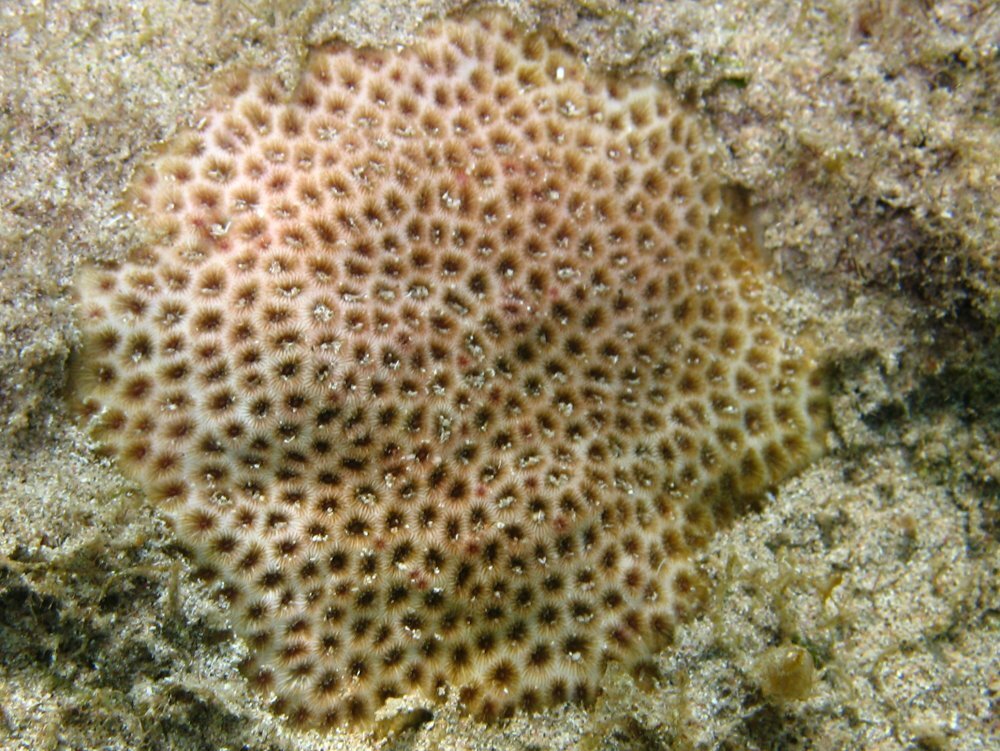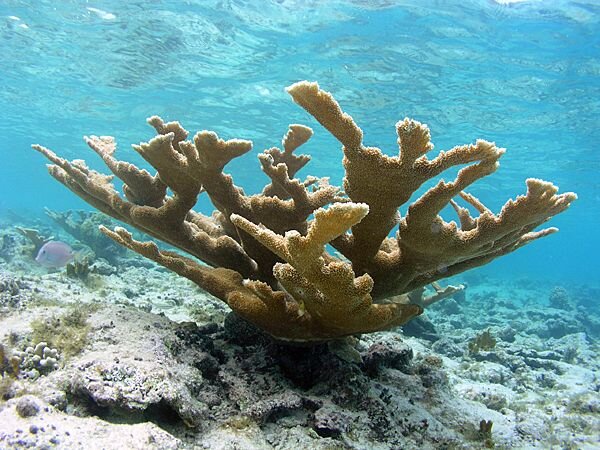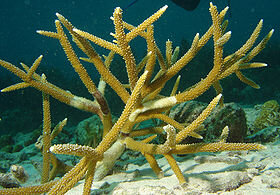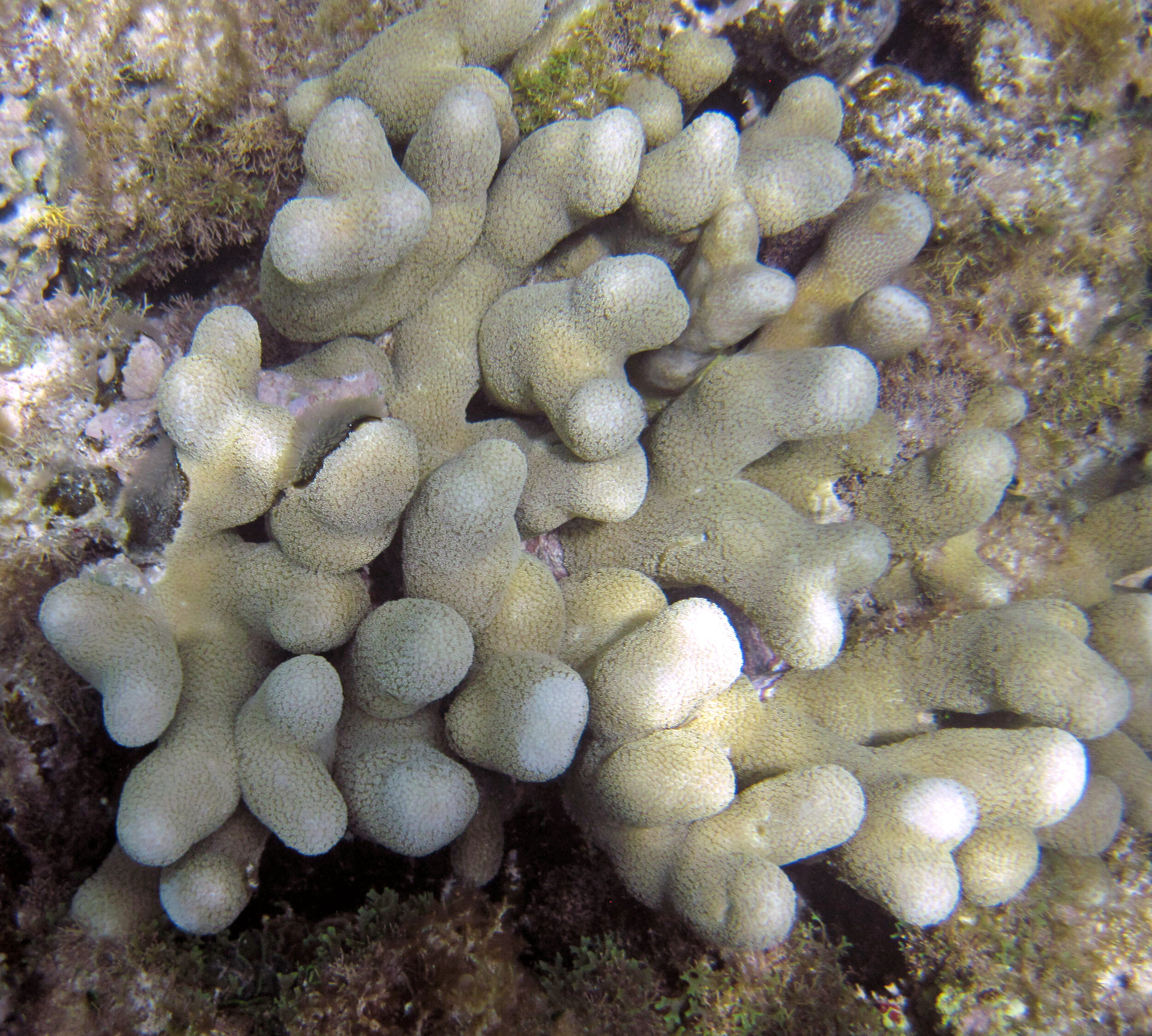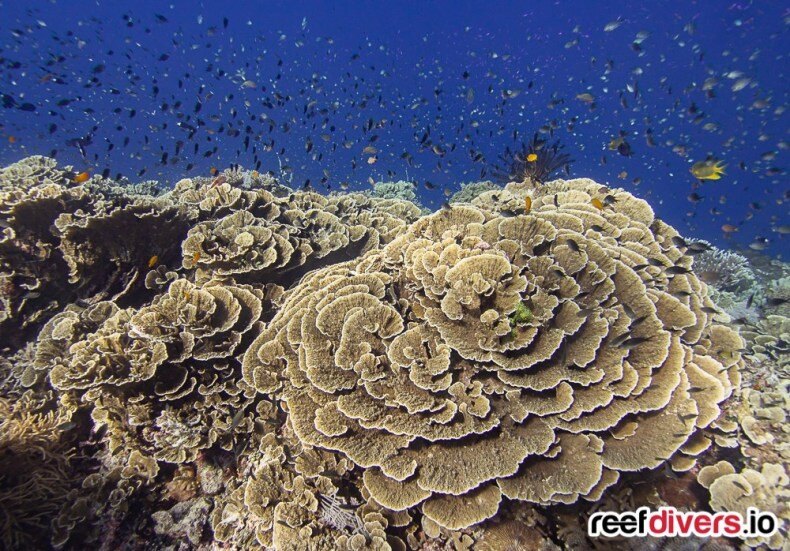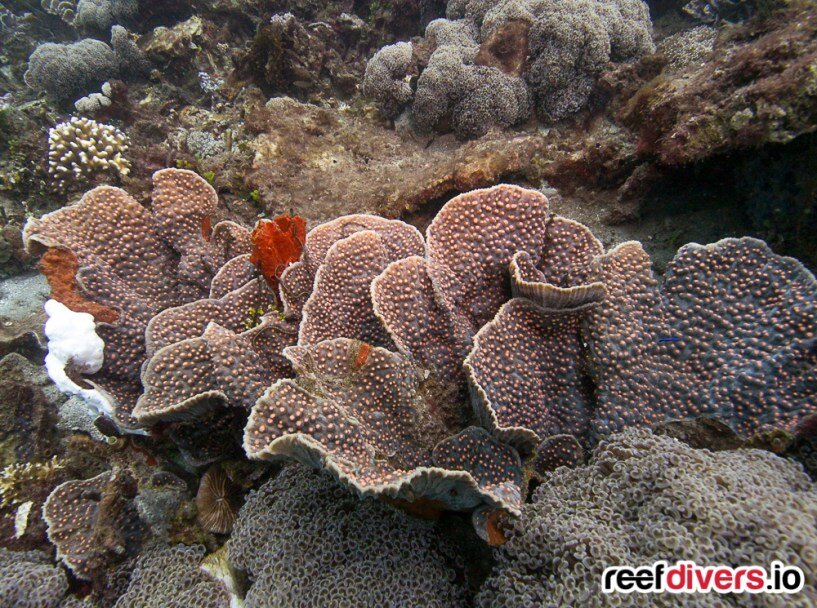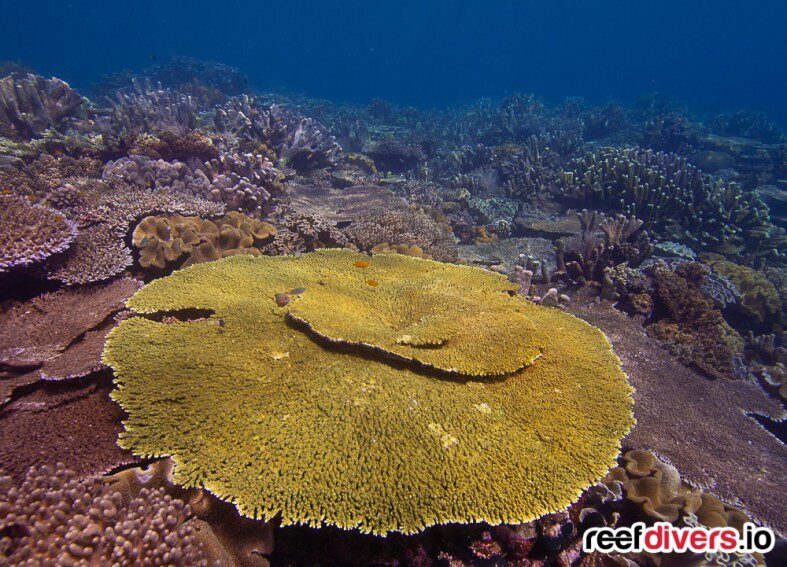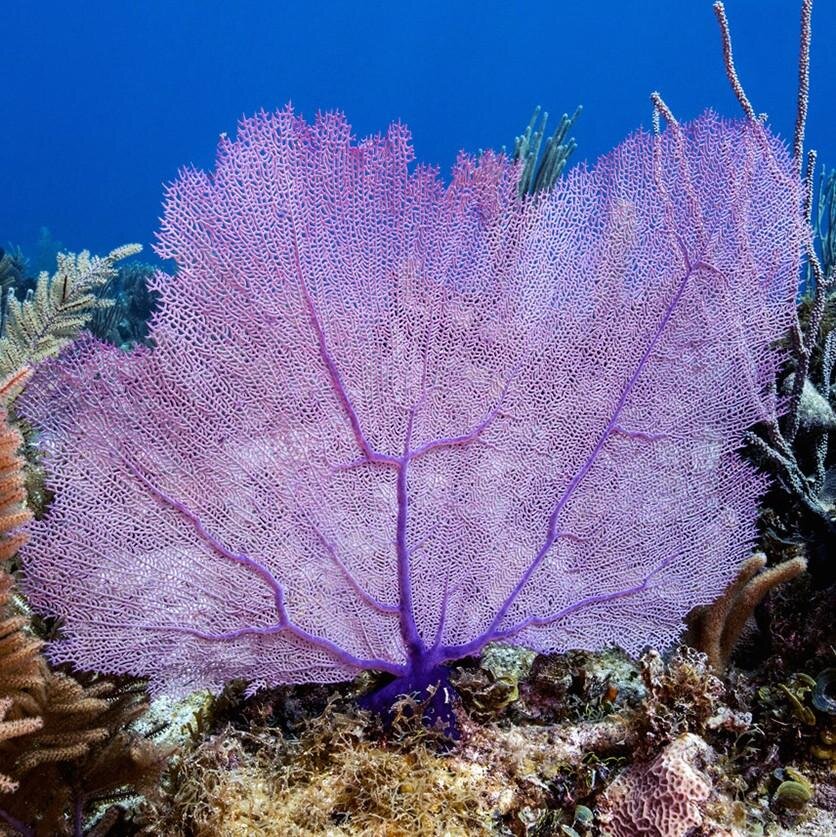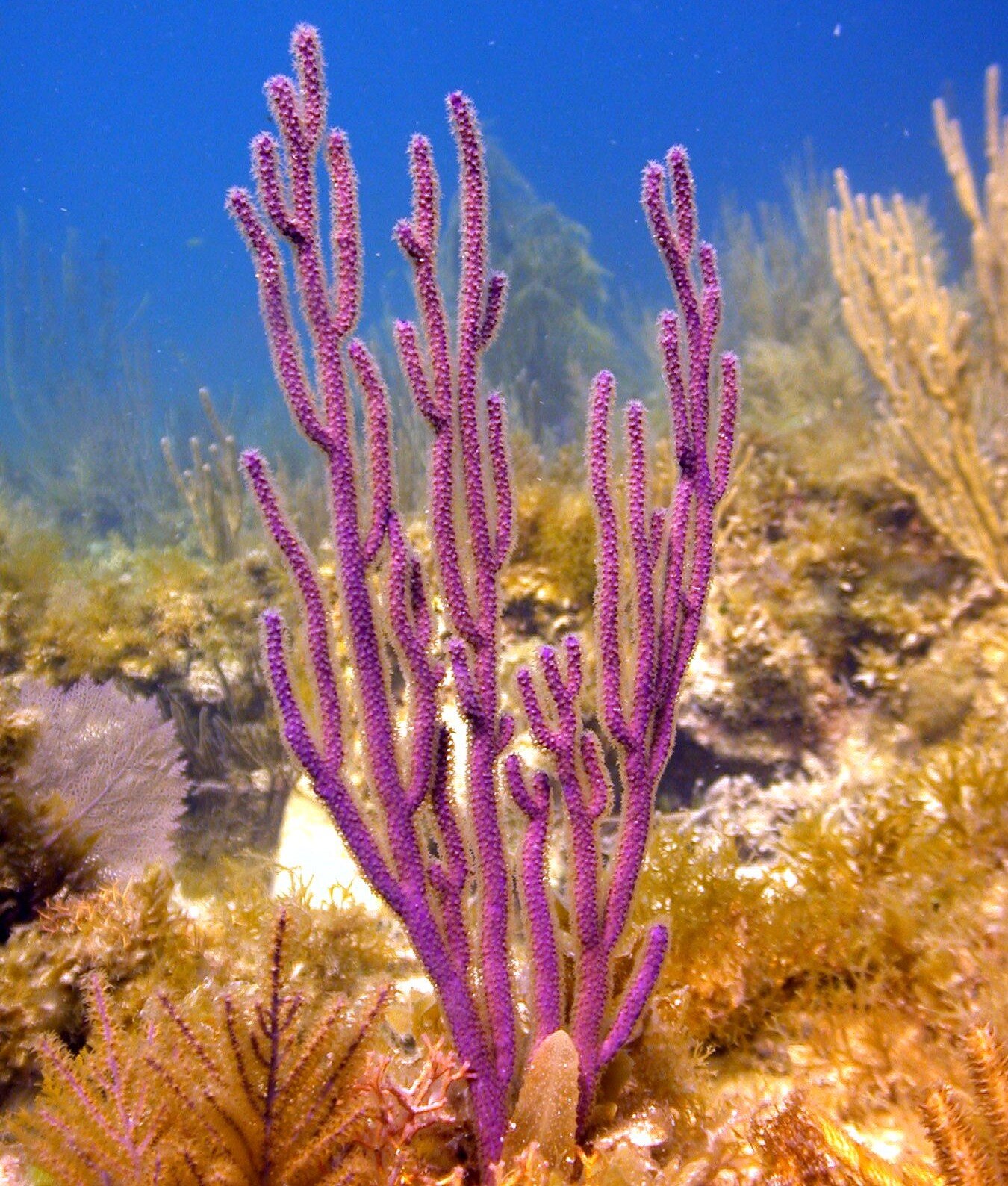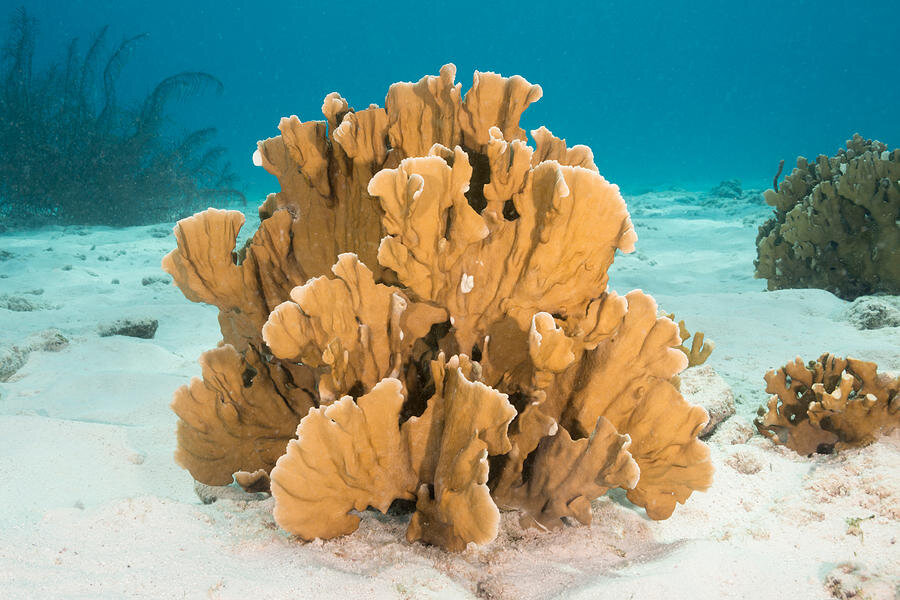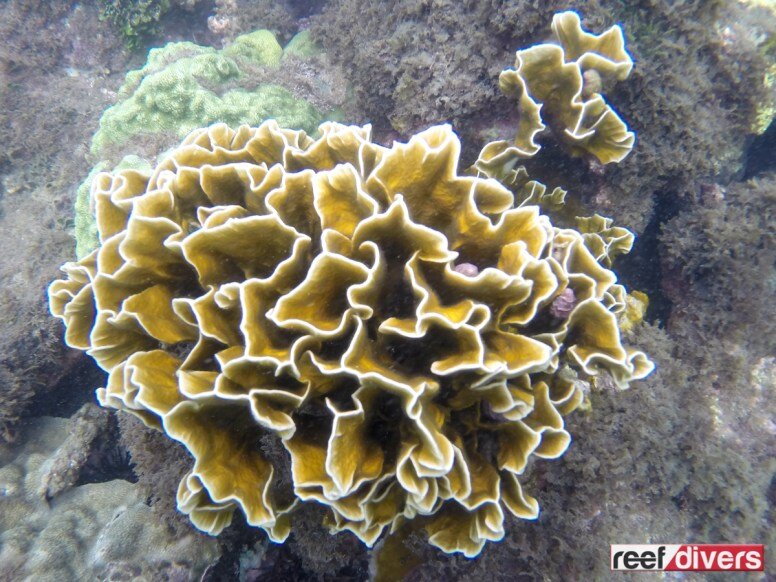The Coral Reefs
The Coral Reef is a marine ecosystem found in The Bahamas. Is it the equivalent of an underwater rainforest because of its high biodiversity. Coral reefs are some of the oldest living structures on the planet, they are home to 25% of all marine life and only take up approximately 1% of the ocean floor.
But what is a Coral?
Coral polyps are in the phylum Cnidaria and are related to jellyfish and sea anemones. Coral polyps are nocturnal and filter feed at night. Because filter feeding is not always a sure fix for these solitary animals, coral polyps developed a symbiotic relationship with zooxanthellae. Zooxanthellae is an algae that is smaller than the coral polyp and lives inside of the coral polyp. This algae is what gives the clear polyps their bright colors. Zooxanthellae use the coral polyp as a safe home and get their food through photosynthesis. In return corals get nutrients such as glucose [sugar], glycerol [a type of alcohol] and amino acids, which are the waste products of photosynthesis.
Corals are often mistaken for plants, however, corals are made from tiny animals called Coral Polyps. These tiny polyps create a hard exoskeleton, which forms the coral that we can see. There are two types of corals, hard corals and soft corals. Hard corals also known as scleractinian live in colonies and build coral reefs. While soft corals, also known as Alcyonacea and Ahermatypic, live in colonies but are not reef building. Examples of soft corals colonies are Sea fans, Sea plums and Sea Whips.
Reef building Corals
Reef building corals are known as require a combination of conditions to thrive. They need salt water, shallow water, a warm water, nutrient free water and clear water.
Salt Water. Reef building corals need salt to live [between 32 to 42 parts per thousand]. Saltwater is also often warmer and clearer than freshwater, which are also conditions that corals need to survive. Reef building corals also secrete more calcium carbonate and need ‘hard’, mineral infused water to do this.
Shallow water. Because the zooxanthellae in the coral polyps get their food through photosynthesis, the corals have to live in shallow water where sunlight can easily reach them. Reef building corals are not usually found below 165ft. of water.
Warm water. Just like all other animals corals can only comfortably survive in certain temperatures. Reef-building corals can generally only survive in water with temperatures between 68–90° F or 20–32° C.
Nutrient free. Corals need nutrient free water similar to the reason corals need shallow water. Nutrient free water means that there is no plankton or algae growth in the water that can make the water murky and reduce the amount of sunlight that is getting to the Zooxanthellae in the coral polyps.
Clean Water. Corals are sessile, filter feeders, therefore they are sensitive to sediment and pollution in their waters. An increase of sediment garbage can smother the coral reefs and prevent them from filter feeding. Water waste that is released into the ocean can cause eutrophication, which is the overgrowth of algae. Algae and Corals compete for space in the marine ecosystem. However, algae grows much faster than corals. Luckily fish on the coral reef [parrot fish and other cleaner fish] are able to manage the normal growth of algae on the reef, so that it does not overgrow the corals. Unfortunately, once nutrients are added to the water, the algae grows faster that the fish can eat it and thus smothers and takes over the coral reefs.
Image Source: Google
Importance of Coral Reefs
A staple marine ecosystem. Coral reefs support more species per unit area than any other marine environment; 25% of all marine life spend part of their lives or their entire lives on the Coral reefs. This means that healthy coral reefs play a large role in the management of fishery populations. Without the coral reefs almost all marine food webs would collapse.
Shoreline protection. Coral reefs help to break wave action, which protects the shorelines from erosion. Without coral reefs many coastal areas would be completely wiped out during heavy wind storms and hurricanes.
Nutrient provider. Corals are able to fix nitrogen and carbon into the ocean, which simply means that corals can take convert unusable forms of nitrogen and carbon into usable forms. Corals also assist with nutrient recycling, which is important because nutrients in a healthy marine environment are low. However, nutrients are still necessary for the the ecosystem to thrive.
Medicinal uses. Because coral polyps secrete calcium carbonate, corals can be used as a calcium supplement to treat multiple sclerosis. Surgeons use coral as a base to regrow new bones during in reconstructive surgeries, cosmetic facial surgery and in areas affected by trauma. Other drugs are being developed from corals as possible cures for cancer, arthritis, human bacterial infections, viruses, and other diseases. Coral reefs are very important in modern medical research.
An attraction. Corals reefs are beautiful and beaming with life and many people travel the world to see them. This brings in money to the ecotourism economy. Activities like snorkeling, diving and glass bottom boat adventures allow persons to see and interact with these underwater rainforests.
The 3 main types of Coral Reefs formations:
Fringing. These reefs can be found growing near the coast surrounding islands and continents. Fringing reefs are separated from the shore by narrow, shallow lagoons. These are the most common type of reef that we see in The Bahamas. An example of this can be see at Paradise Cove in Deadman’s Reef, Grand Bahama.
Barrier. Barrier reefs also grow parallel to the coastline. However, these reefs are separated from the shore by deep, wide lagoons. The Great Barrier Reef in Australia is the largest and most famous barrier reef in the world. Our very own Andros Barrier Reef is the 3rd largest barrier reef in the world at 190 miles long and can be found in the Fowl Cays National Park
Atoll. These are rings of coral that form a protected lagoon usually away from land. Atolls are usually formed when islands that were surrounded by fringing reefs sink into the sea or the sea level rises around them. Most of these islands are usually the tops of underwater volcanoes. The fringing reefs continue to grow and eventually form circles with lagoons inside. Atolls are not very common in The Bahamas. However, two notable atolls are the Cay Sal Bank, which is one of the largest atolls in the world and the Hogsty Reef near Great Inagua and Acklins.
Types of Coral Reefs DiagramPhoto Source: Google Images
Threats to the Coral Reefs
Climate Change. Increased ocean temperatures and changing ocean chemistry are the greatest global threats to coral reef ecosystems. These threats are caused by warmer atmospheric temperatures and increasing levels of carbon dioxide in seawater. This warming causes corals to lose the microscopic algae that produce food that corals need, placing stress on the corals. Without this algae coral also lose their coloration—a condition known as coral bleachingEXIT— because the loss of algae reveals the white color of the calcium carbonate structure underlying the polyps. Severe or prolonged bleaching can kill coral colonies or leave them more vulnerable to other threats such as infectious disease.
Other climate impacts, such as sea level rise, increased frequency and intensity of tropical storms, and altered ocean circulation patterns, can also affect coral reefs.
Ocean acidification refers to a change in ocean chemistry in response to the uptake of carbon dioxide from the atmosphere. The amount of carbon dioxide in the atmosphere is in equilibrium with that in seawater, so when atmospheric concentrations increase so do oceanic concentrations. Carbon dioxide entering seawater reacts to form carbonic acid, causing an increase in acidity.
Each year, the ocean absorbs about one-quarter of the carbon dioxide emitted from the burning of fossil fuels (oil, coal, and natural gas). Since the Industrial Revolution, ocean acidity has increased by about 30%, a rate that is more than 10 times what has previously occurred for millions of years. Further, ocean acidity levels are expected to increase by an additional 40% above present levels by the end of this century.
Increases in ocean acidity (measured by lower pH values) reduce the availability of dissolved salts and ions needed by corals to form the calcium carbonate structure. Consequently, coral growth and reef growth can be slowed, with some species affected more than others. If acidification becomes severe, coral skeletons can actually dissolve. On a local level, nutrient enrichment due to run-off from human activities on land can also cause increased acidity in coastal waters, exacerbating the effects of ocean acidification.
Human Destruction. Boats playa big role in coral reef destruction especially in The Bahamas. Because our waters are so complex, they often can go from 100ft. to 10ft. very quickly. If boaters are not well versed in travelling in our waters, they can run their boats onto the reefs.
Since coral reefs are so beautiful and filled with so much life, they attract a lot of human traffic. People travel all over the world and even throughout their own regions to see coral reefs. Unfortunately, not all of the visitors are careful or conscious with how they encounter the coral reefs. Corals are very fragile and something as simple and bumping into them can break them, which is what happens to a lot of areas where people snorkel often. People can also step on the reefs, which will also destroy them. People have even been seen breaking corals to take back as souvenirs.
Storms. While corals assist in breaking wave activity, they also can be destroyed or broken during the process. Heavy winds and large waves often break branching corals that may be in their path. This process is not always a negative thing however, some coral thrive off of fragmentation.
Overfishing. Removal of key species will cause a ripple effect within the ecosystem. An example of a vital coral reef fish species is the Parrotfish. These fish are grazers, which means they manage the algal populations on the coral reefs. If Parrotfish are removed, algae would over grow the coral reefs and kill them. Other organisms that contribute to managing algal populations are Spiny Sea Urchins and Surgeonfish. Read more about the importance of algal grazing here and here.
Pollution. When garbage is not disposed of properly it can find it way to the ocean. This happens much faster on small islands like those in The Bahamas. Substances like plastics never biodegrade but rather break down into microscopic versions of themselves called microplastics. Plastics and other non-biodegradable substances can trap fish and smother the reefs. Fertilizer runoff from farms and sewage that is dumped in the ocean can result in eutrophication, which will also result in corals being smothered or out competed.
Coastal Development. Dredging to create canals as well as filling in coastal areas can disturb sediment. Once this sediment is disturbed it can float to nearby coral reefs. Sediment reduces water clarity and can hinder coral reef filter feeding.
Invasive species. At the moment in The Bahamas and areas near it, the Red Lionfish is the main invasive species. This fish eats almost anything that is available and has a large appetite. At the moment there are no predators on the coral reef to help lower Lionfish population. Therefore, these fish are reducing populations of native fish that are found on the reef. This reduction in native fish populations also disturbs the natural food web of the Bahamian coral reefs. The only way to reduce Lionfish populations are for humans to hunt and eat them.
Coral Reef Resilience
Reef resilience describes how well a coral reef can cope with natural disturbances. A resilient reef can maintain biodiversity and recover after a disturbance. Resilient reefs are identified by Identifying strong coral recruitment/rugosity [this simply means that the conditions for coral reef reproduction are favorable], low human impact, healthy herbivore populations, healthy coral species, mature coral colonies and good water quality. Reef resilience can be improved and increased by reducing or eliminating environmental stressors through the creation of National Parks, MPAs and environmental laws.



